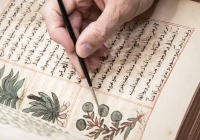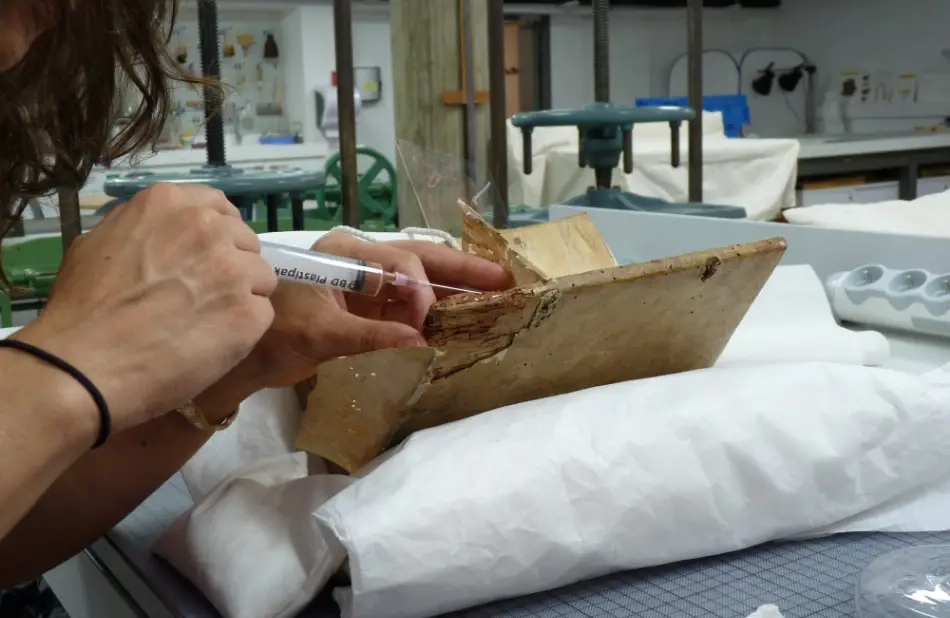Preventive conservation is supplemented by curative conservation, a set of direct actions carried out on objects that are so fragile, and are deteriorating so quickly, that they are under imminent threat: if no action is taken, they could be lost forever. The ultimate aim in curative conservation is to slow down the active processes of deterioration, enabling books to transcend the ages and reach future generations.
When an object is stable but has lost some of its meaning or function through past deterioration or alterations, the actions taken constitute “restoration”. These actions are generally not urgent. They change the appearance of the piece to make it easier to understand. It is worth noting that professionals today consider restoration to be a minor aspect of their work, whereas the general public understand it as an umbrella term for most of the activities involved in conservation.
Any intervention on a book should always take place in conjunction with a plan for safeguarding or promoting collections, or after damage has occurred. This plan is carefully established based on discussions between all those involved in conservation. A qualified professional performs the various stages of the conservation-restoration project.
It all begins with an in-depth examination of the book, which includes identifying and describing it and studying its cultural value and material history. The condition report then draws up an initial health assessment and methodically documents any visible alterations.
Photographs and measurements complete this report, in order to monitor any developments and changes to the object.
The diagnostic interprets the alterations observed, identifying their causes and consequences. As such, it is crucial to have physical and chemical knowledge of the materials that these objects are made of, in order to understand how they were made and how they can deteriorate.
These stages are then used to establish a treatment protocol based on specific objectives, such as safeguarding, digitisation or display. It specifies the actions and products that will be implemented.
-

-

Work in progress on a book from the Circus Arts collection held at Paul-Valéry Montpellier 3 University.
-

The left board of a 13th century manuscript is reattached. Adding sewing support extensions restores mechanical function to the board; this will protect the manuscript and allow it to be handled once again.
-

The condition of pictorial layers on a 17th century manuscript is diagnosed using a stereoscopic camera.




They are structured around key principles :
- The conservator follows a strict code of ethics and deontology, which require that their work on an object avoid causing irreparable loss of information.
- The methodology of the conservation project and the information collected are recorded in the documentation. From the initial examination to the end of the operation, each stage is described, the choice of treatments explained and justified, and the products and procedures listed. Documentation is important to ensure that the object can be understood and worked on in the future.
- Conservation treatments always aim to ensure that the materials found on the heritage object are compatible with those added at a later date. The materials used must be innocuous, meaning they must cause no harmful interactions, be it physically, chemically, mechanically or optically. It is essential that they remain stable over time.
- The reversibility of materials and treatments aims to make it possible to “turn back the clock” to before an intervention. In practice, it is difficult to fully restore an object to its initial state. The term “retreatability” is perhaps more appropriate, but is not yet widely used.
- The visibility of conservation-restoration treatments on the object is essential. This means that interventions should appear discreet, from a distance, yet discernible to a trained eye. It makes it easier to understand the object, both intellectually and materially.






